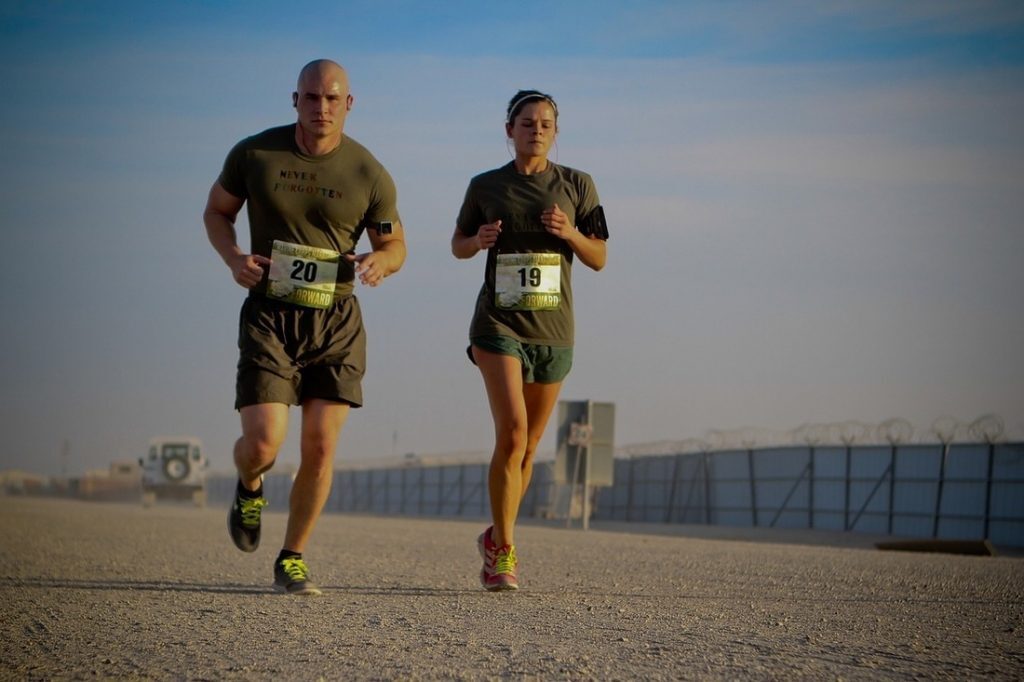For the longest time I was convinced that “cardio” was a complete waste of time. I thought that all you really needed was a couple of hard interval workouts every week to keep the ticker going. In my mind, anything over 20 minutes was just too much.
Here’s the truth: I was dead wrong.
Thanks to the influence of a few smart people around me (Justin, Pat and Carmen, I’m talking about you), I recently started reading more in order to increase my understanding of everything related to the human body. Along the way I picked up a copy of Joel Jamieson’s Ultimate MMA Conditioning book, recommended by many as a great starting point in the realm of energy system development (ESD).

For the longest time, ESD had been in my “what you don’t know you don’t know” category, somehow remaining completely off my radar (or maybe I just didn’t want to see it, but that’s a discussion for another day). But once I finished Joel’s book, I realized how little I actually knew about energy systems. If I wanted to become a better coach, I had to dig a little bit deeper to get a better understanding of it all.
By “a little bit deeper”, I mean that I took a one way ticket to the bottom of the ESD rabbit hole. A couple of months later, I’m slowly emerging to the surface again, and one thing is now clear to me:
Cardio is one of the most important aspects of your overall fitness.
And that’s true REGARDLESS of who you are.
If you’ve spent any amount of time with me, you know that I hate generalizations. But this time I’m confident in saying that EVERYONE would benefit from better cardiovascular capacity.
For those of you who don’t care about (or as scared of) the science behind the energy systems and how they work, I encourage you to skip the following section and go straight to the 7 reasons why you need cardio training in your routine.
Energy Systems 101
Every action in our body requires energy. This energy is found between the bonds of a molecule called Adenosine Tri Phosphate (ATP) which is commonly referred to as the energy currency of the human body. When ATP is broken down (ATP => ADP + P) through chemical reaction, the energy in the bond is released and made available for the body to use.
The primary job of our three energy systems is to put P back together with ADP, resulting in more ATP to keep powering our bodily functions. In order to accomplish this task, each system employs a different strategy. Note that the energy systems don’t PRODUCE energy, they simply recycle the products of the breakdown of ATP.
We all have a certain amount of ATP stored in our cells that is ready to be used instantaneously, but that reserve gets eaten up in the first couple of seconds of effort, requiring the energy systems to kick in and do their part.

As you see on the left side of the graph, the phosphagenic system is able to deliver ATP at the highest rate, but only for a short period of time (10-12 seconds). Think about a 100m sprint or a heavy clean & jerk. These events will mostly rely on this high-power, anaerobic (no oxygen involved) system.
At the opposite side of the spectrum we have the aerobic (or oxidative) system. This one doesn’t deliver nearly as much punch, but is extremely efficient once it gets going. Provided enough fuel and oxygen are available, it can virtually run forever. When you are performing a low to moderate level of activity, like long distance running, you are primarily relying on your aerobic system. This pathway is the only one that relies on oxygen to perform it’s job.
The third system, the glycolytic system, operates between the phosphagenic and the aerobic systems. It can deliver a high amount of ATP, but can only run smoothly for about 40 to 70 seconds until byproducts accumulate in the blood and force you to slow down. Just like the phosphagenic system, it operates without oxygen (anaerobically). It’s the most painful pathway to train. Think of your last interval training session – you were likely tapping heavily into your glycolytic system.
So why should you focus so heavily on the aerobic system? Since you have three different pathways, shouldn’t you be training all of them to some degree to get the best results?
While you definitely need to train each system to some extent, here are 7 great reasons why the aerobic system should be your primary conditioning focus, regardless of the activities or sports you practice.
Reason 1 – It can help you live longer
In 2008, Ruiz et al. conducted a study(1) to assess the influence of muscle strength and cardiorespiratory fitness on healthy aging. They followed over 8000 individuals for 18 years and determined that people over 60 years old that were “strong” (classified in the upper third for strength) had 50% less chances of dying than those who were “weak” (classified in the bottom third for strength). They also found that regardless of strength levels,“individuals with higher cardio-respiratory fitness had a greater life expectancy than low cardio-respiratory fitness counterparts”.
This means that you should strive to be strong and have good cardio at the same time, but at the very least you should work on having good cardio!
Reason 2 – It will improve your strength training
Yes, you read this right. Training your aerobic pathway can help you lift bigger weights. By increasing the ability of your fast twitch fibers to utilize oxygen, you can increase their endurance, which will allow you to do more work. The more work you do, the bigger your potential for strength gains. It’s that simple.

Reason 3 – It will make your heart more efficient
The right kind of aerobic training can increase the size of your heart’s left ventricle. With this increase in size (called eccentric ventricular hypertrophy), the heart is able to pump out more blood with each contraction. This means that it won’t have to work as hard to get the same amount of blood pumped.
A good indicator of your heart’s efficiency is your resting heart rate: it should be under 60 bpm. If you are an athlete, aim for the mid to high 40s.
Reason 4 – It will help you relax and recover better
Research (2) has shown that endurance (aerobic) training increases the activity of your parasympathetic nervous system (PNS). This will help balance out your autonomic functions (i.e. internal regulation mechanisms) so your body can better shift between “mobilization” and “restoration” states, instead of being stuck in fight-or-flight mode (mobilization) all the time. This will greatly enhance your growth and recovery potential. Better autonomic balance can also positively affect your mood, emotions, behavior and social interactions (3).
Reason 5 – It will make you faster
That’s right, training slowly will make you faster. It sounds completely backwards, but bear with me for a second.
In order to produce force, muscle fibers contract (and relax) between 5 and 50 times per second. The higher the intensity of the effort, the higher the number of contractions per second (also called “Rate Coding”). Between each contraction, a muscle fiber needs to be inhibited (or “turned off”) in order to be contracted again. The inhibition – or relaxation – phase has a very high energy cost. In order for it to happen smoothly, you need a high concentration of ATP (i.e. energy containing molecule) in your cells.
Through aerobic training, you can increase your mitochondrial density (or the amount of mitochondria each one of your cells contain). These are like small power plants inside your cells that rephosphorylate (i.e. “putting P back with ADP”) most of the ATP in your body.
Cardio training also increases muscle capilarization (how many blood vessels run through the muscle). This will increase the amount of oxygen available to the mitochondria to turnover ATP more rapidly. Both these aerobic adaptations will result in more ATP being available within the cell at any given moment, which will improve the rate of inhibition of your muscle fibers. This, in turn, will improve your speed of movement by allowing you to contract your fibers at a faster rate.
Reason 6 – It is the most trainable of all three systems
Talking about improvement potential of the different energy systems, Issurin wrote:
“[the] most pronounced changes can be attained in aerobic abilities. More specifically, long-term endurance training can induce an increase in aerobic enzymes of up to 230% (Volkov, 1986). Similarly, mitochondria count, myoglobin content and muscle capilarization increase dramatically. As a result, maximum oxygen uptake can be significantly improved […].
Unlike aerobic ability, anaerobic [phosphagenic and glycolytic] metabolism can be improved to a lesser extent. This applies to anaerobic enzymes and particularly to peak blood lactate, whose increase is relatively small even when training is very intense.”(4)Here’s what this means is plain english: Training your aerobic system is going to bring you the best returns on your time and effort invested. The starting levels of your phosphagenic and glycolytic systems are strongly determined by your genes and your potential to improve them is small. So if you want to get the most out of your training efforts, train your aerobic system first and foremost.
Reason 7 – It provides long-lasting adaptations
Once the training of a given quality is stopped, this quality (e.g. muscle strength) will slowly revert back to it’s pre-training level. But not all fitness qualities are retained equally. Different training adaptations are lost at different rates.
For example, adaptations acquired through consistent strength training (i.e. increased muscle strength and bone density) will be retained for a long time (months to years). In the same way, aerobic adaptations like heart hypertrophy, increased capillary density, lower resting heart rate and maximum stroke volume all have long “lifespans”.
On the flip side, most adaptations acquired through training of the anaerobic systems (i.e. increase phosphagenic/glycolytic power, capacity and efficiency) will only last a few days to a few weeks.
For that reason, you should spend most of your time training your aerobic system since the changes that it will generate in your body will last the longest. Your anaerobic training should be programmed intelligently according to your competition/yearly training schedule.

How to get started with endurance training
Before you start including cardio back into your routine, track your resting heart rate for a few days to get a benchmark value. You can take it by hand (on the jugular or the wrist works best) or invest in a heart rate monitor with chest strap (like this one) for just over $50. Once you start training, having this tool will ensure you’re actually doing your cardio the right way.
Average heart rate value:
>60bpm: Start taking your cardio seriously (2-4 sessions per week)
<60bpm: Good average for most people but can be improved (2-3 sessions per week)
<50bpm: Athlete caliber conditioning. Aim to maintain (1-2 sessions per week)
Once you’ve established how much training you need, your goal should be the following: During each cardio session, spend 30+ minutes being continuously active while your heart rate remains between 125 and 150 beats per minute.
This could be done by running, rowing, cycling, pushing/pulling a sled, doing a light weight circuit, etc. Each week, increase your total volume of work (e.g. 5+ minutes per workout each week) for 4 to 6 weeks. After this training cycle, re-test your resting heart rate to see the improvements you’ve made.
Remember that this is just one way of improving your aerobic conditioning. Joel Jamieson outlines 8 different methods in his book. If you do the work outlined above, you will have built a solid foundation for your energy system development. Afterwards, you can take the next step and figure out what other training methods would fit your specific needs.
If you need help figuring out exactly what to do next, contact me today to set up a free consult, so I can help you figure out where to go with your training to get the best results possible!
References: (1) https://www.ncbi.nlm.nih.gov/pubmed/26791164
(2) https://www.ncbi.nlm.nih.gov/pubmed/10758814
(3) Stephen Porges – The Polyvagal Theory
(4) Vladimir Issurin – Principles and Basics of Advanced Athletic Training

Pingback:BikeErg Guide: How To Get The Most Out Of Your Concept 2 Bike